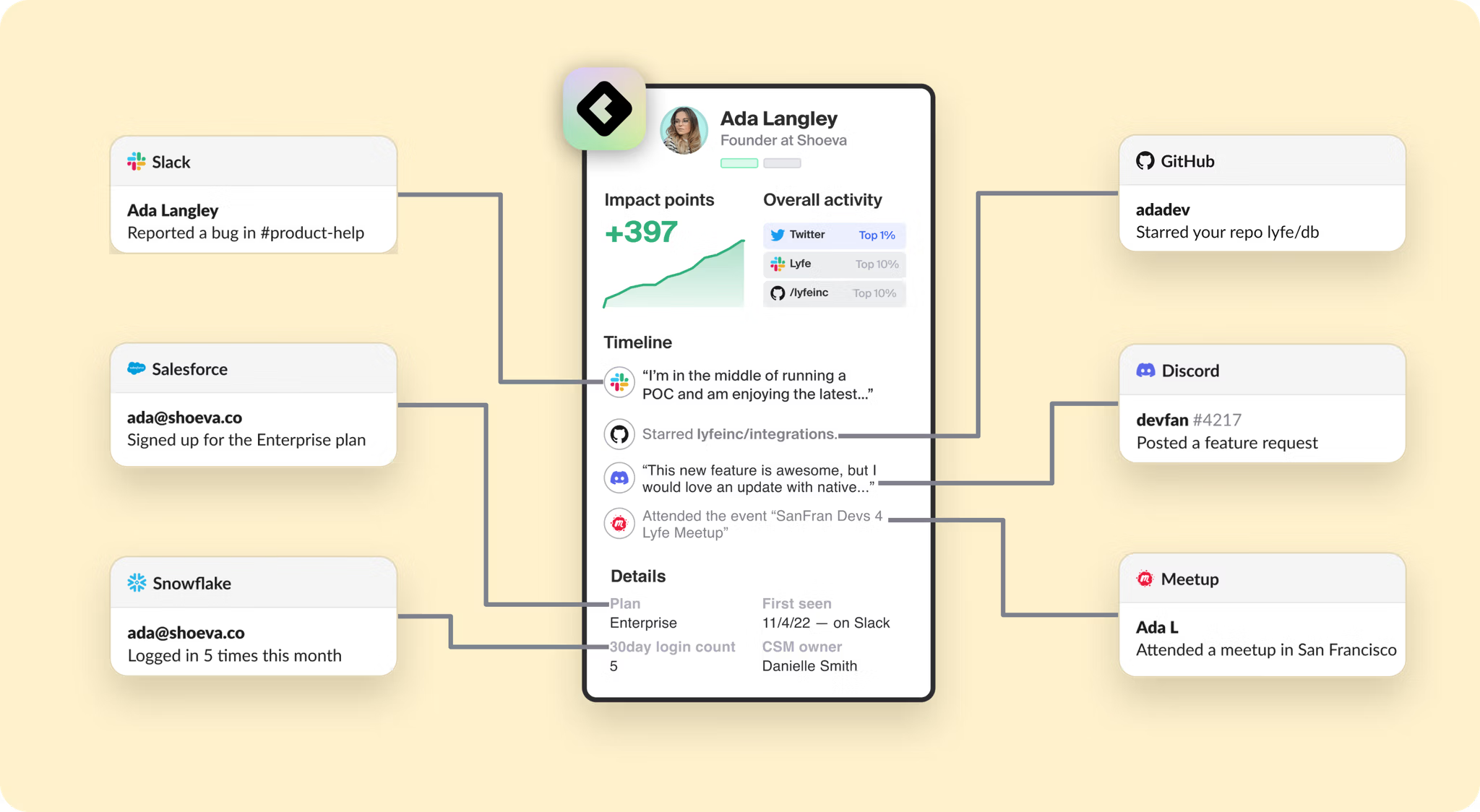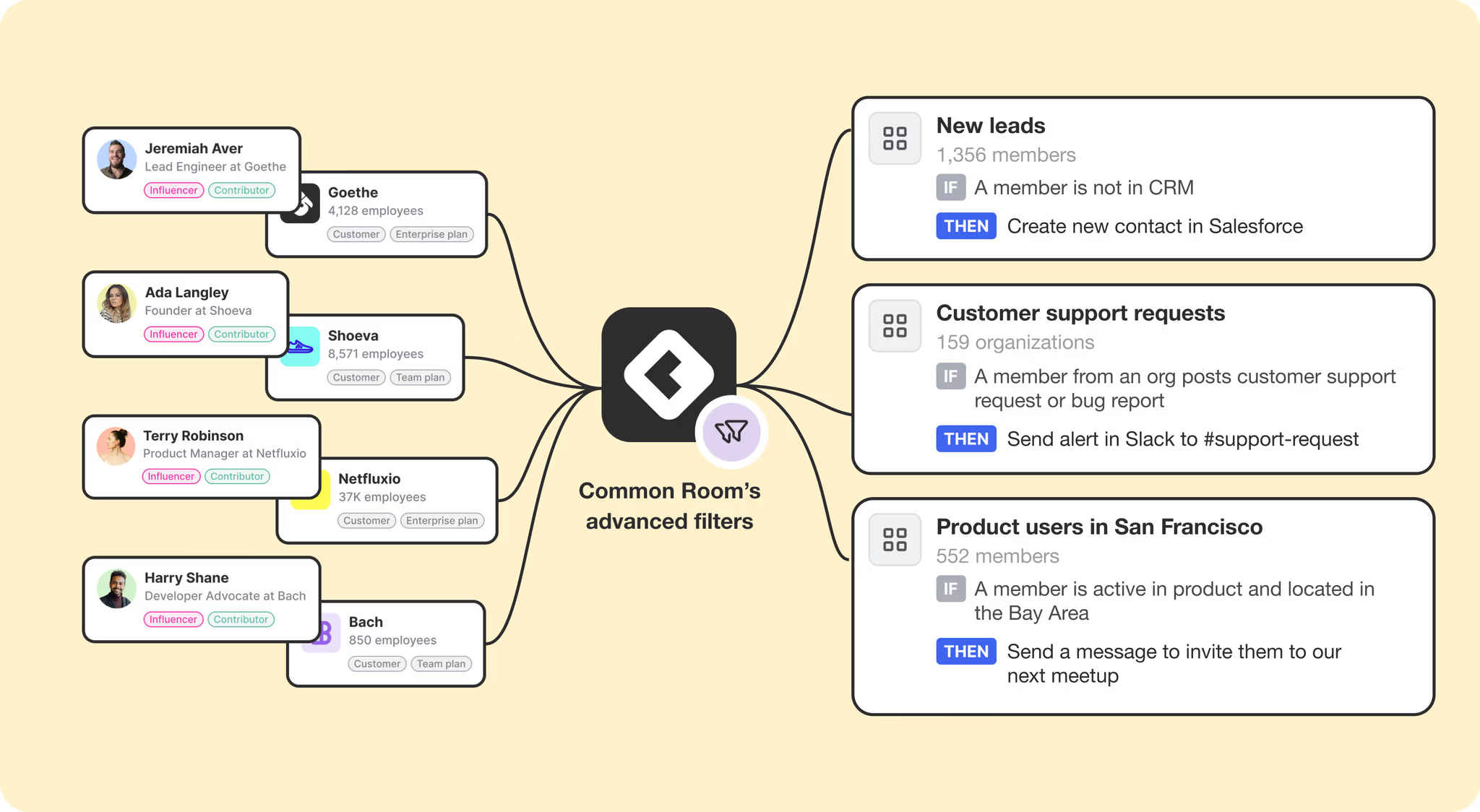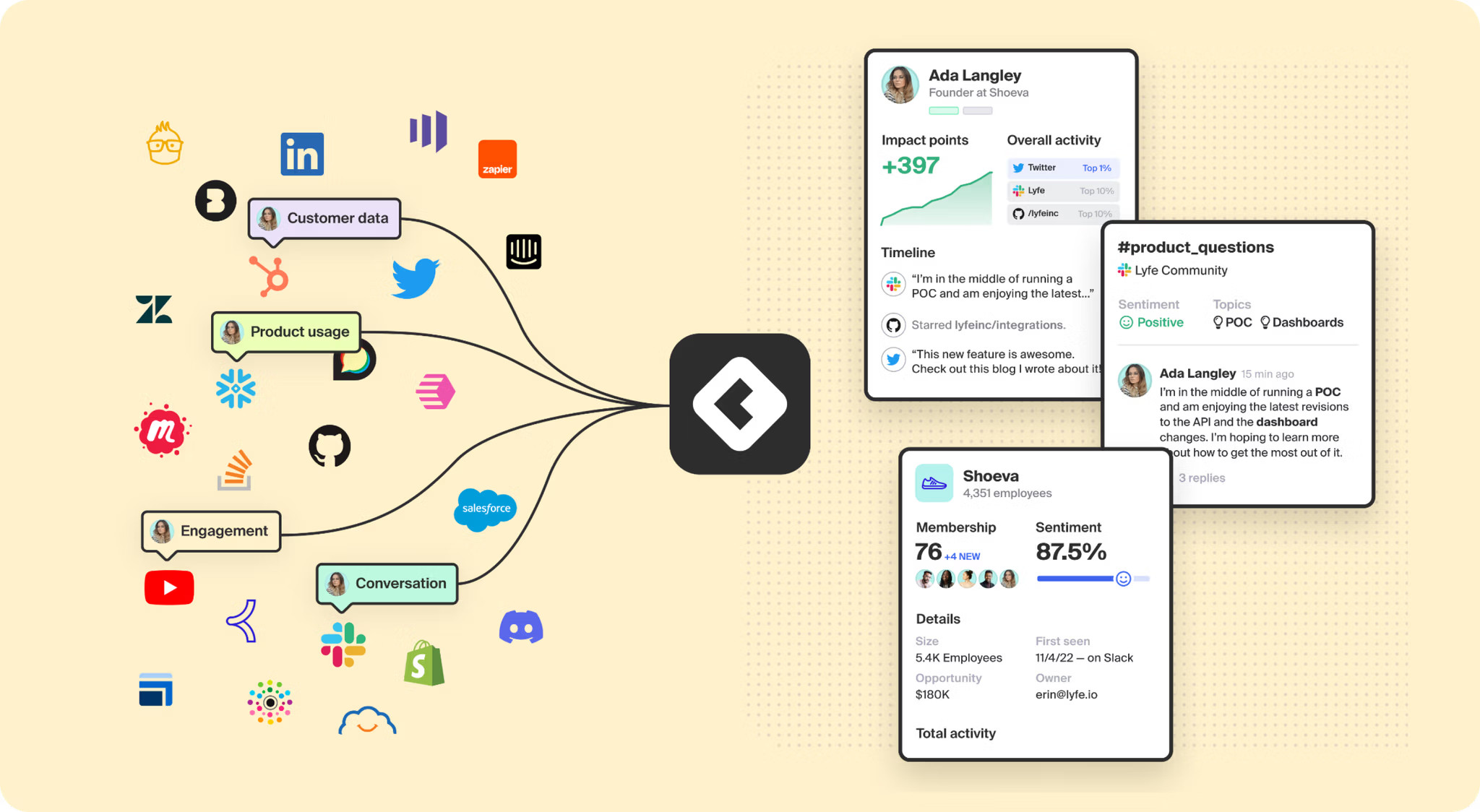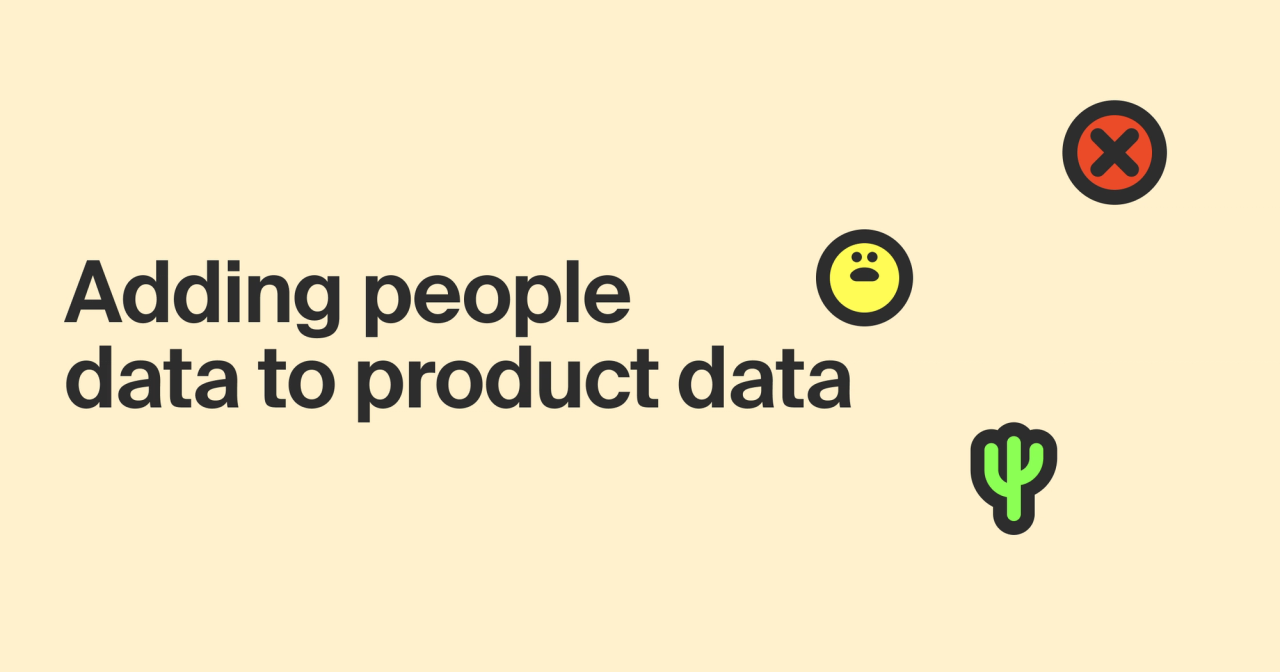Seed stage, scale-up, pre-IPO—if you’re a B2B SaaS company, it’s a safe bet that you have a product-led growth (PLG) strategy.
And odds are your sales reps hate it.
Why wouldn’t they? They no longer hold the keys to the product, and it’s hard to sell users on enterprise features when the free forever plan is “good enough.”
It’s no better with limited free trials. If your product has a lot of traction, your sales team is drowning in a sea of noise. Sellers don’t need a spiff—they need a life jacket.
Keep reading to learn:
- Why product-led sales teams are overwhelmed
- What product-first companies need to evolve
- How to connect the dots between product and people
Fire hoses aren’t for drinking
Research from Keyplay and PeerSignal spells it out: As PLG companies grow, sales headcount grows with them.
Self-serve credit card transactions may kick-start your growth, but they rarely get you all the way to unicorn status. So organizations invest in salespeople to get high-ACV deals flowing.
That’s why 69% of PLG’s rising stars have an enterprise offering—and a growing sales team to complement their self-service motion.
PLG is a customer acquisition machine. And like a lot of machines, it's noisy.
Imagine you’re a PLG sales rep. You’re getting pinged a zillion times a day about product activity, but you have no idea what’s worth your time and attention. You can’t be everywhere at once, and, let’s be honest, not every signal (even one from a top-tier account) necessitates a sales outreach.
There are only so many hours in the day. Prioritization is key to hitting quota, but you’re stuck sifting through a fire hose of data points.
Trialists don’t usually have a “ImatchyourICP@enterprisecompany.com” email address. In fact, there’s a good chance they’re signing up using a personal Gmail account to kick the tires.
If you’re lucky, your product’s sign-up process nets you a name, job title, and company. But there’s no guarantee that this information is accurate (or that the person you’re looking at is a decision-maker).
At fast-growing PLG companies—where product-based engagements happen at high volumes 24 hours a day, seven days a week—separating the signal from the noise is a full-time job.
Product data isn’t people data
Sure, there are plenty of product signals that help sellers prioritize their workflows—accounts approaching usage limits, new members added to accounts, surges in product usage.
But even if you can get product usage data into the hands of PLG sales teams (and that’s a big if), they’re only getting a glimpse of the buyer.
Product data on its own isn’t enough. It’s helpful to know what someone’s doing in your product and when, but sellers need to know who that someone is, what they’re saying and doing across other channels, and how it connects to the customer journey.
The world doesn’t start and stop at your product log-in portal. Product usage is a big piece of the puzzle, but it’s still only one piece. It’ll shed some light on intent, but it leaves sellers blind to buyer fit and context.
So sales teams scour through tools that weren’t designed for them in search of insights.
Manual research on native platforms, constant context switching between point solutions—it turns out stitching together your own view of the customer is time-intensive and expensive. And even if you take the plunge, collecting data doesn’t make it actionable.
User data is generally siloed and unstructured. It has to be centralized, combined with other data sources, and enriched to make it easy to digest and act on. Doing this on your own is a multi-month (or even multi-year) endeavor.
And all the while, revenue opportunities pass you by.
How to power product-led growth with Common Room
Common Room is designed to help you connect the dots between people and your product so you can turn user activity into revenue.
It starts with AI-powered identity resolution and enrichment. With dozens of natively built and fully managed integrations—including with the most popular business data sources—Common Room allows you to combine all your digital interaction, product usage, and customer relationship data in one place to create a unified profile of every user based on their activities across channels.
Key demographic and firmographic details—such as location, job little, contact information, place of employment, annual revenue, capital raised, and hundreds of other data points—are served up to help you zero in on what matters to you.
By combining this data with product usage trends, social intent, community conversations, and other digital signals, you get full visibility into your user base and where users are in the customer journey.
🎤 “Enhancing lead scoring with signals from community, social, and other digital channels gives us a more complete understanding of each user as they move through their customer journey with Census. The insights brought together by Common Room ensure our team can engage with the right person at the appropriate time with an offer that truly aligns to their needs.”
—Allie Beazell, Marketing Chief of Staff and Director of Developer Marketing at Census

You can then use filters, tags, and segments to help you separate the best opportunities from the rest.
Drill down into people and organizations based on the attributes and actions that are most important to you. Automatically tag individuals and the companies they work for as economic buyers, ideal customer matches, and more. Then add your high-intent, high-fit opportunities to dedicated segments to monitor and take action on them at scale.
🎤 “You always want to find the leads that you know are really likely to convert, and with Common Room, I can see that literally every day."
—Gozie Nwachukwu, Head of Sales Development at Temporal

Finally, operationalize your day-to-day work streams with customizable views and powerful automations.
Transform your leads and accounts into tasks lists and add individuals to Outreach sequences with the click of a button. Make sure you’re always the first to know about relevant activity with automated alerts, then guarantee you’re the first to act on it with automated workflows.
You can make sure nothing slips through the cracks and instantly reach out to leads on the channels they prefer.
🎤 "It’s the first tool that doesn't add more work to the mix. It actually pulls things together in one central spot and is the one place my team can go to see what's happening in the program, rather than going to each one of our different tools. Above all, it saves our team the time and frustration of having to pull data and then manually make sense of it."
—Joshua Zerkel, Head of Global Engagement Marketing at Asana

Whether it’s a spike in product usage, a question coming in over Intercom, or a post on LinkedIn, Common Room gives you the identity, intent, and context of every person who engages with your company.
More importantly, we help you hone in on which accounts need your attention now and why.
PLG sales teams need the full picture, not a partial view. That’s what Common Room delivers.
Complete your PLG strategy with Common Room
Ready to see how Common Room helps you uplevel your product-led growth strategy?

